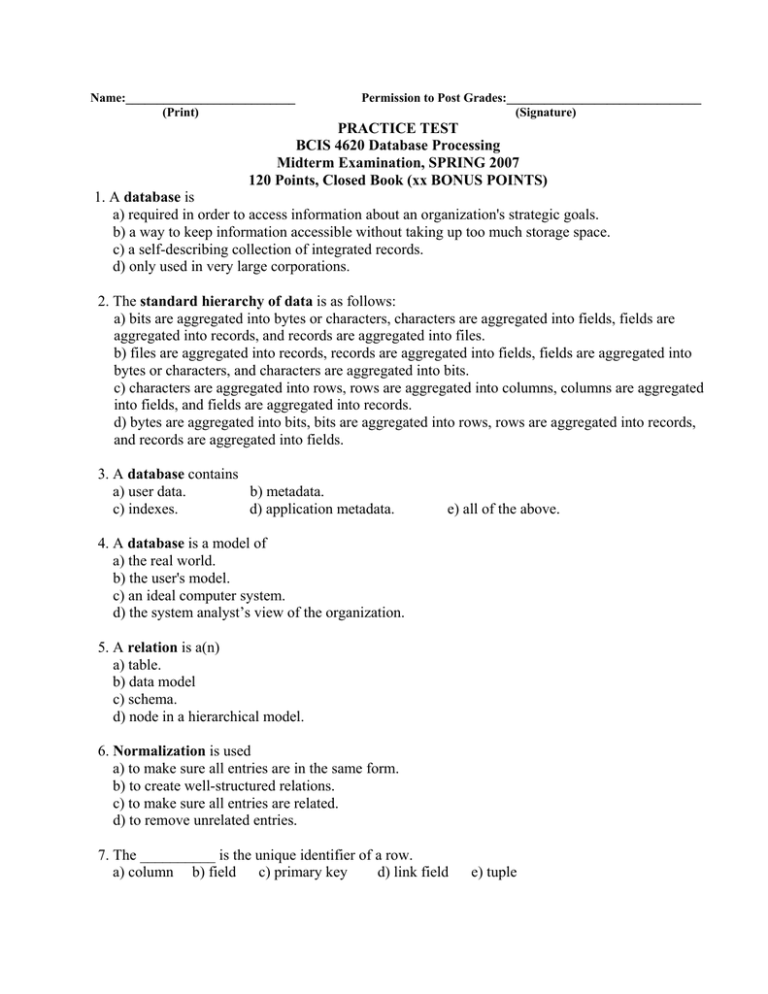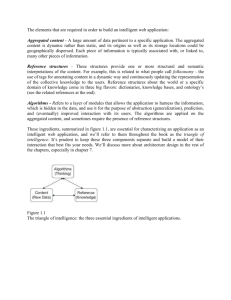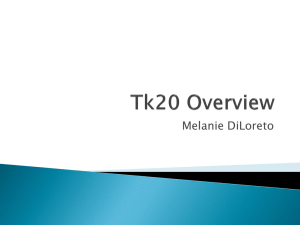Document 13450906
advertisement

Name:___________________________ (Print) Permission to Post Grades:_______________________________ (Signature) PRACTICE TEST BCIS 4620 Database Processing Midterm Examination, SPRING 2007 120 Points, Closed Book (xx BONUS POINTS) 1. A database is a) required in order to access information about an organization's strategic goals. b) a way to keep information accessible without taking up too much storage space. c) a self-describing collection of integrated records. d) only used in very large corporations. 2. The standard hierarchy of data is as follows: a) bits are aggregated into bytes or characters, characters are aggregated into fields, fields are aggregated into records, and records are aggregated into files. b) files are aggregated into records, records are aggregated into fields, fields are aggregated into bytes or characters, and characters are aggregated into bits. c) characters are aggregated into rows, rows are aggregated into columns, columns are aggregated into fields, and fields are aggregated into records. d) bytes are aggregated into bits, bits are aggregated into rows, rows are aggregated into records, and records are aggregated into fields. 3. A database contains a) user data. b) metadata. c) indexes. d) application metadata. e) all of the above. 4. A database is a model of a) the real world. b) the user's model. c) an ideal computer system. d) the system analyst’s view of the organization. 5. A relation is a(n) a) table. b) data model c) schema. d) node in a hierarchical model. 6. Normalization is used a) to make sure all entries are in the same form. b) to create well-structured relations. c) to make sure all entries are related. d) to remove unrelated entries. 7. The __________ is the unique identifier of a row. a) column b) field c) primary key d) link field e) tuple 8. Bottom-up development a) operates with the need to develop a single component of a specific system. b) begins by obtaining statements of requirements by reviewing the outputs and inputs of the existing computer-based systems. c) analyzes the forms and reports for existing manual systems. d) all of the above e) none of the above 9. The Entity-Relationship model a) is used to interpret, specify , and document requirements for database-processing systems. b) provides constructs for showing the overall structures of the users' data requirements. c) is especially useful for top-down database design. d) all of the above e) none of the above 10. Group attributes a) have a single value. b) are composites of other attributes. c) establish a relationship between one semantic object and another. d) none of the above 11. Semantic object link attributes a) have a single value. b) are composites of other attributes which relate simply to only one class. c) establish a relationship between one semantic object and another. d) none of the above 12. In ER modeling, an identifying relationship implies that the: a) relationship is 1:N, with primary key of the parent entity is part of the primary key of the child entity. b) primary key of the child entity is part of the primary key of the parent entity. c) relationship is 1:N, with exactly one child entity required. d) relationship is a subtype relationship, with exactly one subtype entity required. 13. A candidate key a) is a unique identifier. b) is always the concatenation of all of the attributes in a row of the table. c) a special data structure defined for a table in order to improve access performance. d) both a and b e) both a and c 14. In the union of two relations a) the tuples from one relation are added to those of a second relation to produce a third relation. b) the order in which the tuples appear in the third (created) relation is not important. c) duplicate tuples must be eliminated. d) all of the above e) none of the above




